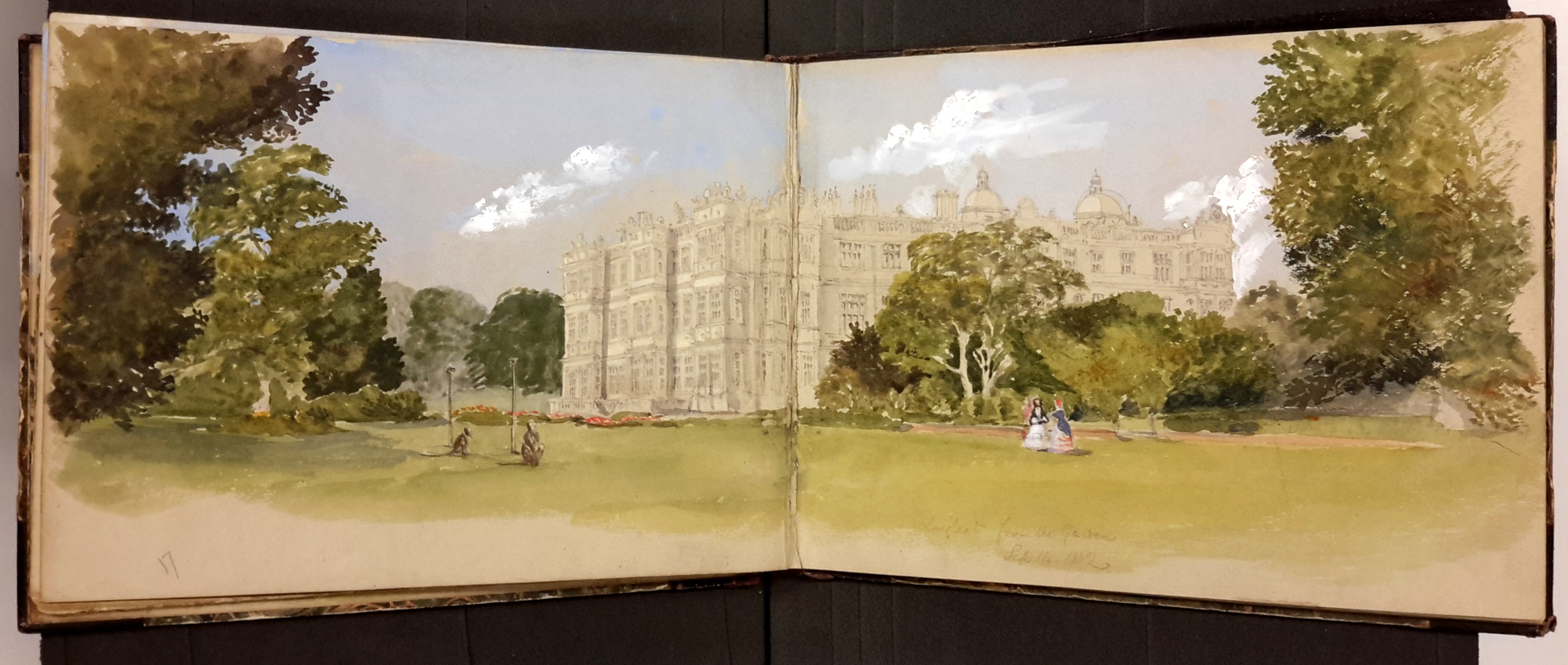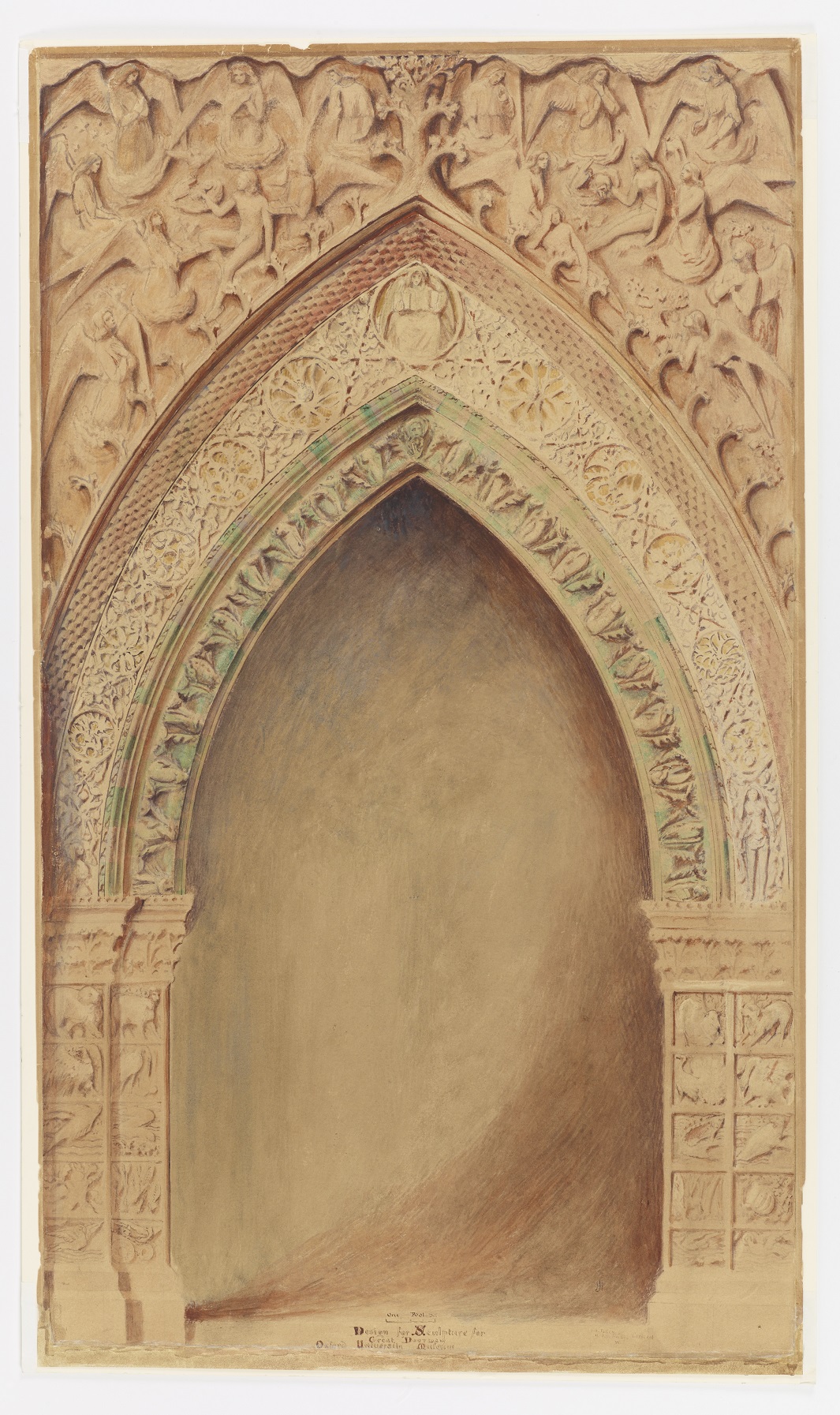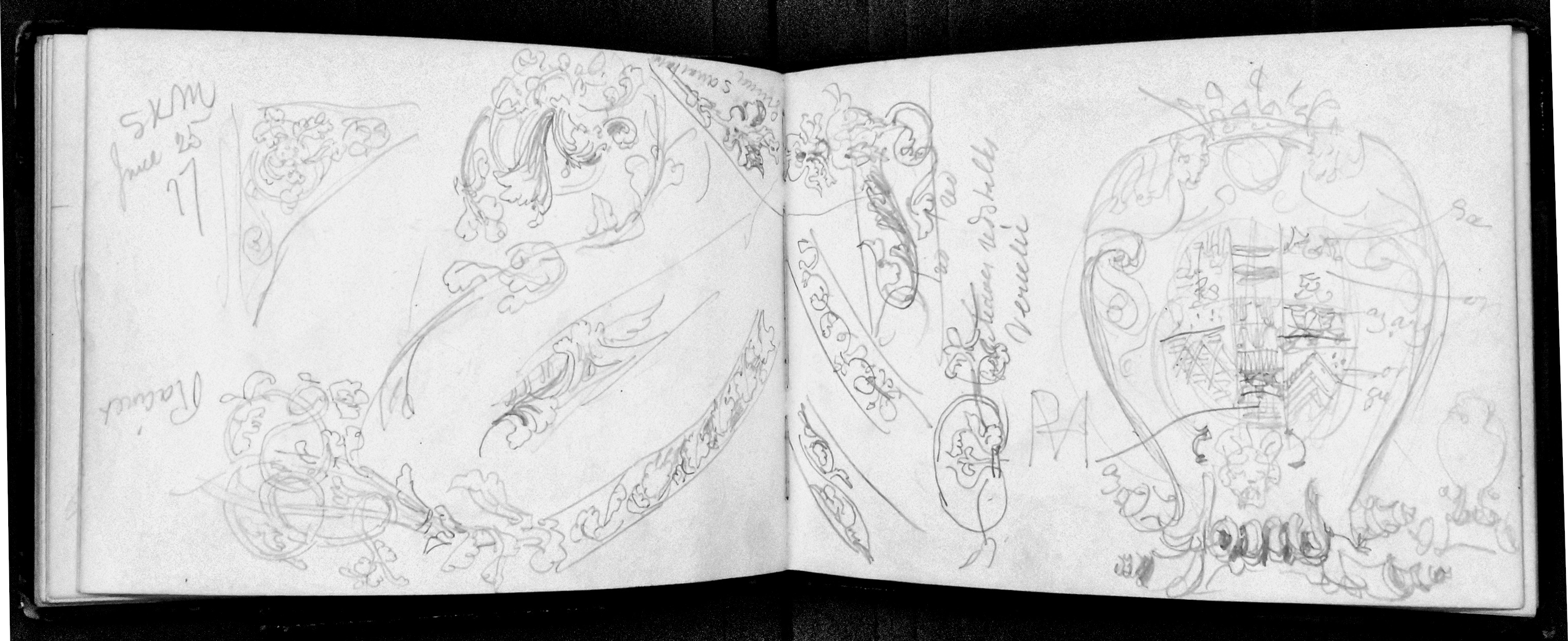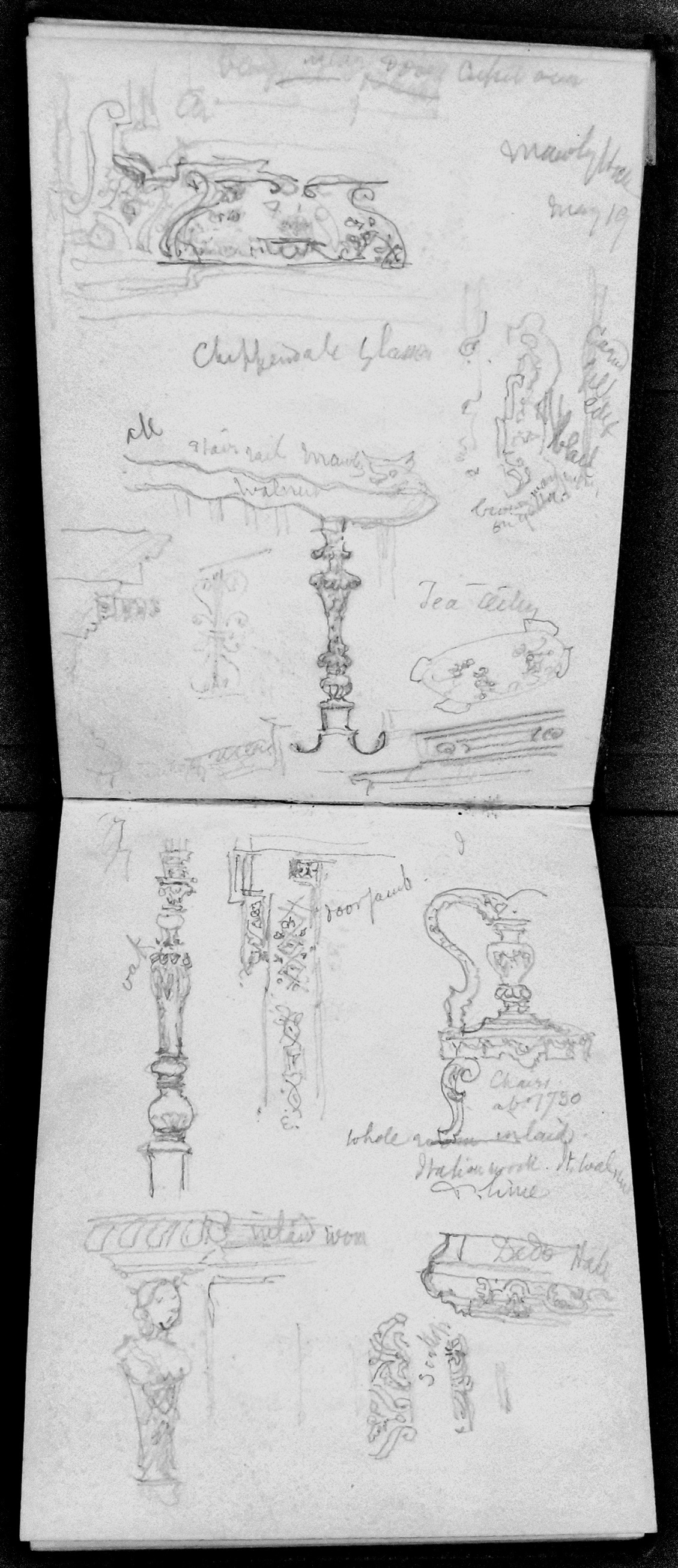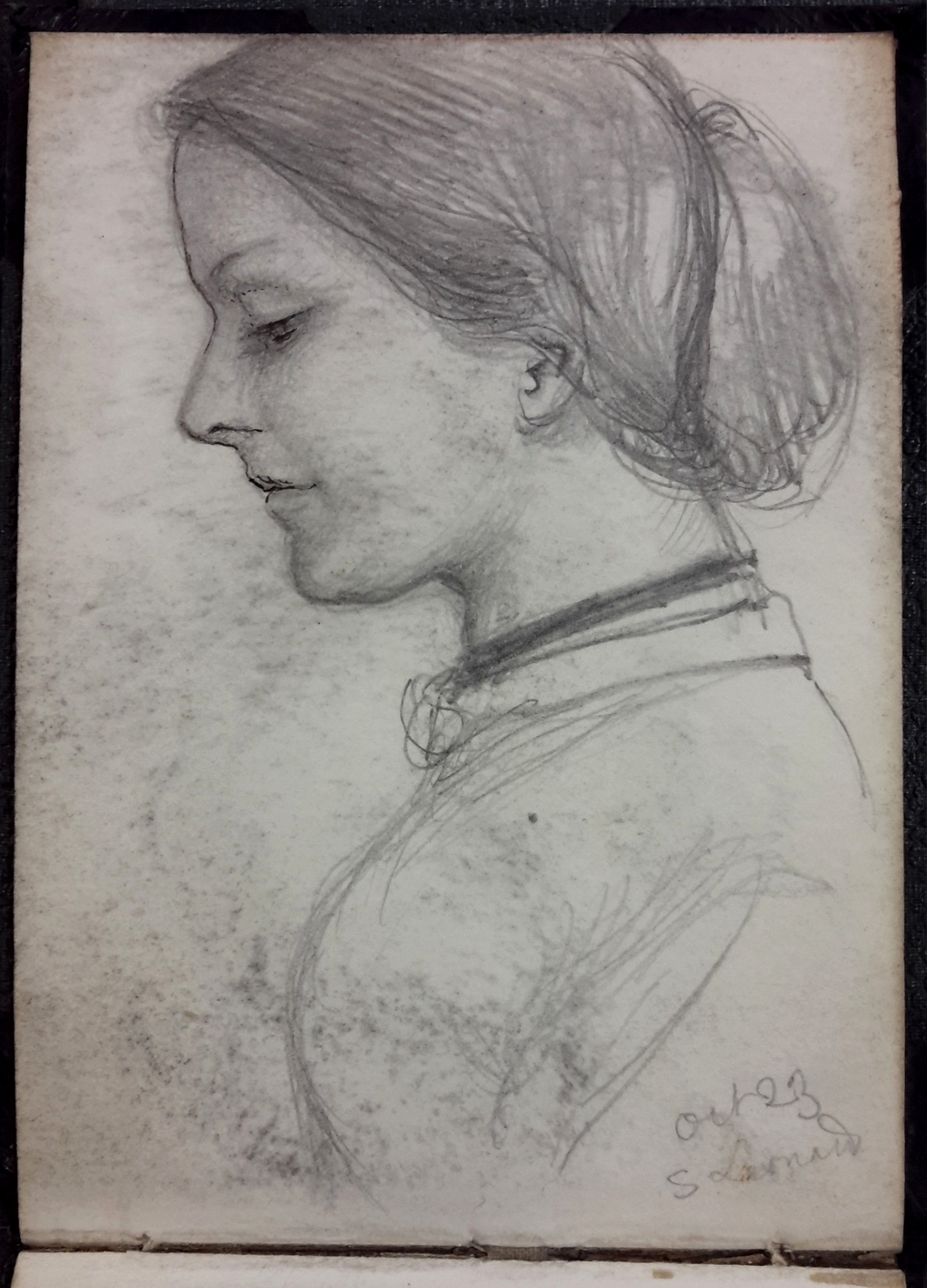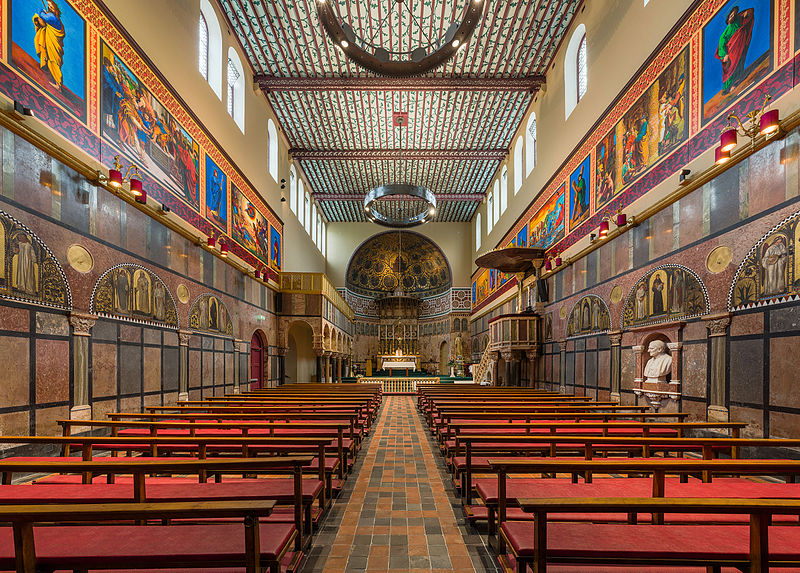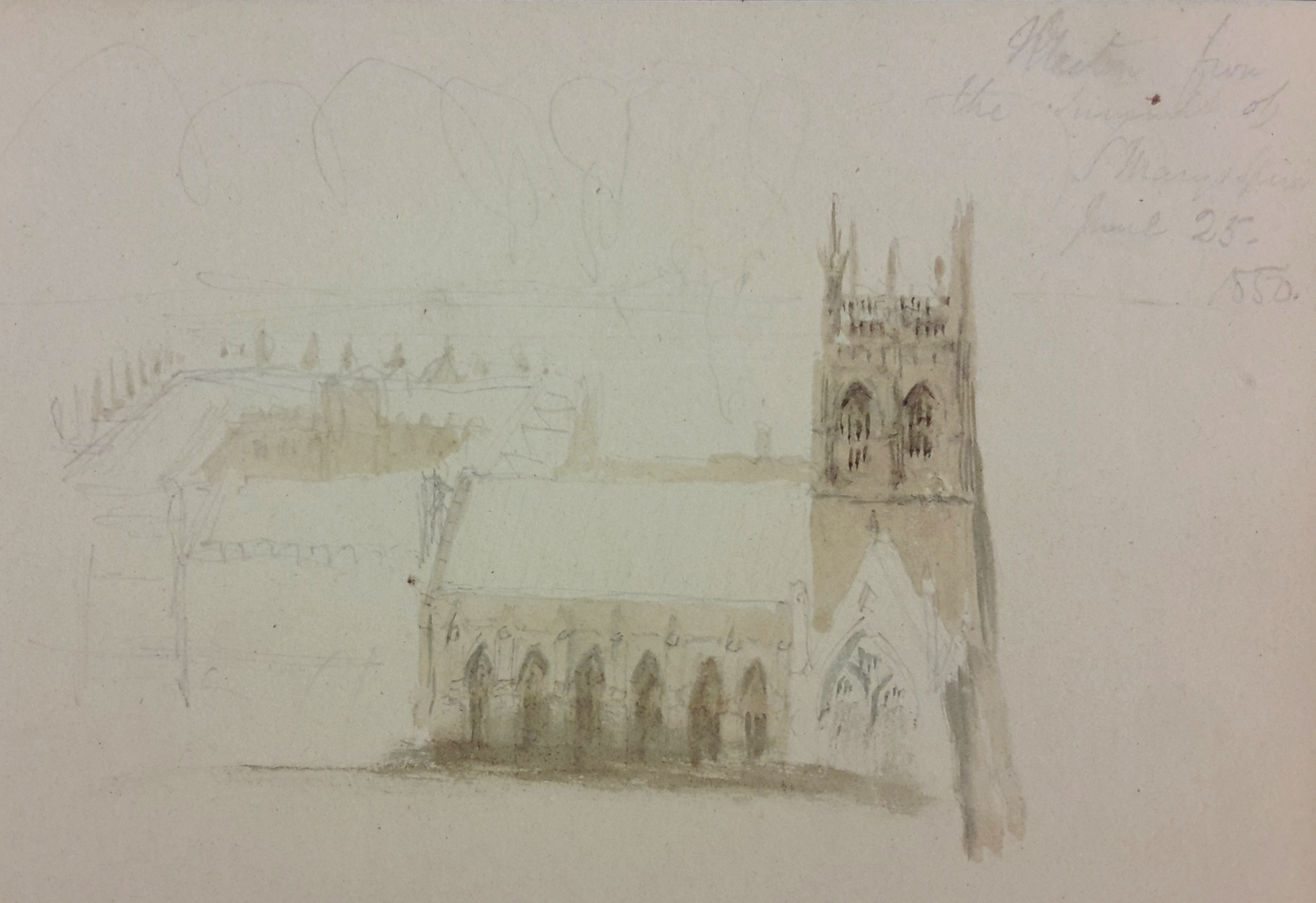This is the last in a series of five blog posts to mark the bicentenary of John Hungerford Pollen whose archive has recently been acquired by the Bodleian Libraries.
This week’s blog posts on John Hungerford Pollen would not be complete without mentioning one very important aspect to Pollen’s life: his family. As we have seen, in September 1855, Pollen married Maria LaPrimaudaye in Woodchester Priory, Stroud, Gloucestershire. Maria was likewise interested in the decorative arts and, in later life, would become an expert in lace, publishing Seven centuries of lace in 1908. Maria looked back at their relationship a few years later and neatly summed up their characters:
I have often thought that my husband’s high-mindedness and singleness of purpose, together with a most resolute will, and almost incredible indifference to pain, discomfort or any of the minor troubles of life, clearly show the likeness to his Roman ancestor, just as my natural levity and high spirits and over-sensitiveness to trifles are excused, I hope, by my French descent. (1)

 J.H. Pollen, sketch of Maria Pollen, 10 Nov 1862, sketchbook (left) and photograph of Maria Pollen, n.d., by unknown photographer, photograph album (right), Bodleian Libraries, Pollen archive, currently uncatalogued
J.H. Pollen, sketch of Maria Pollen, 10 Nov 1862, sketchbook (left) and photograph of Maria Pollen, n.d., by unknown photographer, photograph album (right), Bodleian Libraries, Pollen archive, currently uncatalogued
In 1858, the Pollens moved to 11 Pembridge Crescent, Bayswater, which became their London home for the rest of their married life. They were to have ten children all together, two girls and eight boys (2):
- Anne Gertrude Mary Pollen (1856-1934)
- John Hungerford Pollen (1858-1925)
- Walter Michael Hungerford Pollen (1859-1889)
- Anthony Cecil Hungerford Pollen (1860-1940)
- Francis Gabriel Hungerford Pollen (1862-1944)
- George Charles Hungerford Pollen (1863-1930)
- Margaret (‘Daisy’) Winifred Pollen (1864-1937)
- Arthur Joseph Hungerford Pollen (1866-1937)
- Stephen Hungerford Pollen (1868-1935)
- Clement Hungerford Pollen (1869-1934)
The children frequently appear throughout Pollen’s sketchbooks, one of which is dedicated to ‘Babies 1866’.


J.H. Pollen, sketches of Francis Gabriel Hungerford Pollen (‘tell me about the wolf’), 22 April 1866 and Anthony Cecil Hungerford Pollen, 7 December 1866, sketchbook, Bodleian Libraries, Pollen archive, currently uncatalogued
 J.H. Pollen, sketch of Anne Gertrude Mary Pollen, 8 October 1876, sketchbooks, Bodleian Libraries, Pollen archive, currently uncatalogued
J.H. Pollen, sketch of Anne Gertrude Mary Pollen, 8 October 1876, sketchbooks, Bodleian Libraries, Pollen archive, currently uncatalogued
Between 1871 and 1875, to keep costs down, John and Maria decided to take their children abroad to be educated. They spent five years living in an old house in Munster, Westfalia, where the children could have a good Catholic primary education more cheaply than could be found in England. When the youngest child (Clement) was six years old, the family permanently moved back to England and divided their time between London and Newbuildings, the house in Sussex they rented from Pollen’s good friend Wilfred Scawen Blunt. Maria would look back very fondly to the happy and content years when all the family were together at Newbuildings:
…to my children love of home and all that that word means is signified by the word ‘Newbuildings’ and none other… (3)
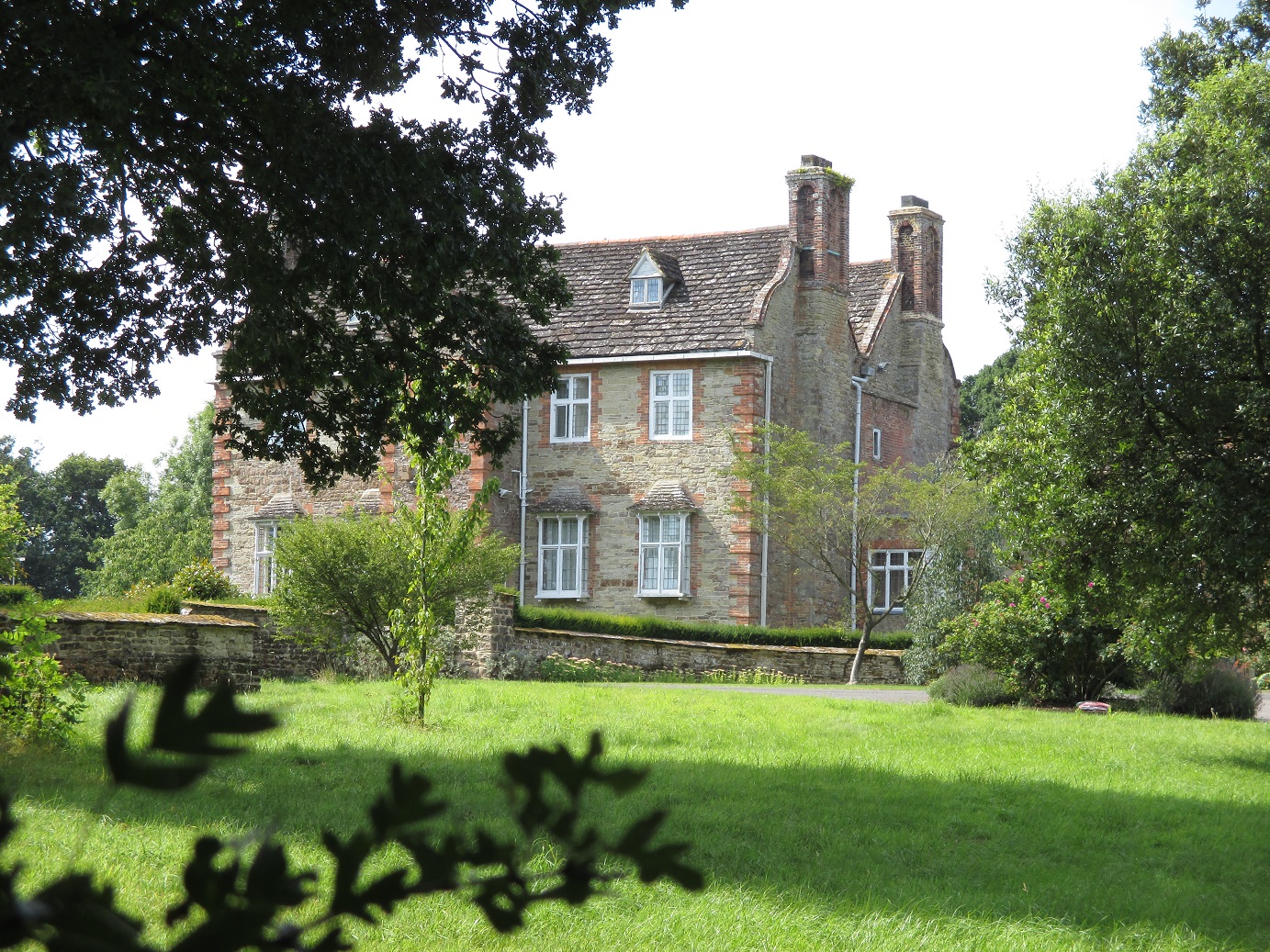 Newbuildings Place, one mile north of Dragons Green, West Sussex, seen from the east, 2016, originally posted on Wikimedia Commons by Antiquary (CC BY 4.0)
Newbuildings Place, one mile north of Dragons Green, West Sussex, seen from the east, 2016, originally posted on Wikimedia Commons by Antiquary (CC BY 4.0)
Back in England, the boys went on to study at Newman’s Oratory School in Edgbaston, Birmingham. Pollen’s eldest son and namesake, John Hungerford, became a Jesuit priest and historian. He was asked to draw together the history of the order in England and is consequently credited with being a key person in the history of the order’s archives. His brothers Anthony Cecil and George Charles also entered the priesthood: Anthony became a noted composer and George, who had a keen interest in chemistry and geology, became a Fellow of the Geological Society.
Walter became a soldier and became ADC to Lord Ripon, Viceory of India between 1883 and 1884 (when Pollen was Lord Ripon’s private secretary). Walter became part of the Survey of India Department between 1884 and 1887, though he was invalided out due to fever. He returned to the east in 1888 and became Survey Officer to the Lushai Expedition in early 1889, but died of fever in Chittagong in March that year. Stephen likewise became a soldier and also served as ADC to two successive Viceroys in India (Lord Lansdowne and Lord Elgin) before serving in the South African campaign. Francis became a naval officer who fought in the war in Sudan between 1884 and 1885. He became part of the Naval Brigade in the Gordon Relief Expedition in Burma in 1886. Both Francis and Stephen retired in 1902, but returned to service during the First World War. Arthur struck out a different career to his siblings, training as a barrister and becoming a businessman, inventor and journalist. Anne, who published a memoir of her father in 1912, entered a religious community and became a nun.
 J.H. Pollen, sketch of family at Newbuildings, 27 August 1880, sketchbook, Bodleian Libraries, Pollen archive, currently uncatalogued
J.H. Pollen, sketch of family at Newbuildings, 27 August 1880, sketchbook, Bodleian Libraries, Pollen archive, currently uncatalogued
In the days before his death, Pollen celebrated his 82nd birthday together with his family in Pembridge Crescent, having lived long enough to see the foundation stone being laid for the new Victoria and Albert Museum over three years earlier.(4) Whilst Pollen’s career was certainly varied, his interest for art, design, and architecture never wavered and his steadfast commitment to his religious faith, his friendships, and his family never failed. The final word in his daughter Anne’s memoirs of her father was left to Sir George Birdwood:
 From Anne Pollen, John Hungerford Pollen, 1820-1902 (London, 1912), p.388.
From Anne Pollen, John Hungerford Pollen, 1820-1902 (London, 1912), p.388.
-Rachael Marsay
References
1) A note on Newbuildings by Maria Pollen, 1914, unpublished, Bodleian Libraries, Pollen archive, currently uncatalogued.
2) According to Anne Pollen, a further child, the Pollen’s youngest son Benjamin Hungerford Pollen, died an infant in 1875. Anne Pollen, John Hungerford Pollen, 1820-1902 (London, 1912), p.372.
3) A note on Newbuildings by Maria Pollen, 1914
4) Anne Pollen, John Hungerford Pollen, p.369.
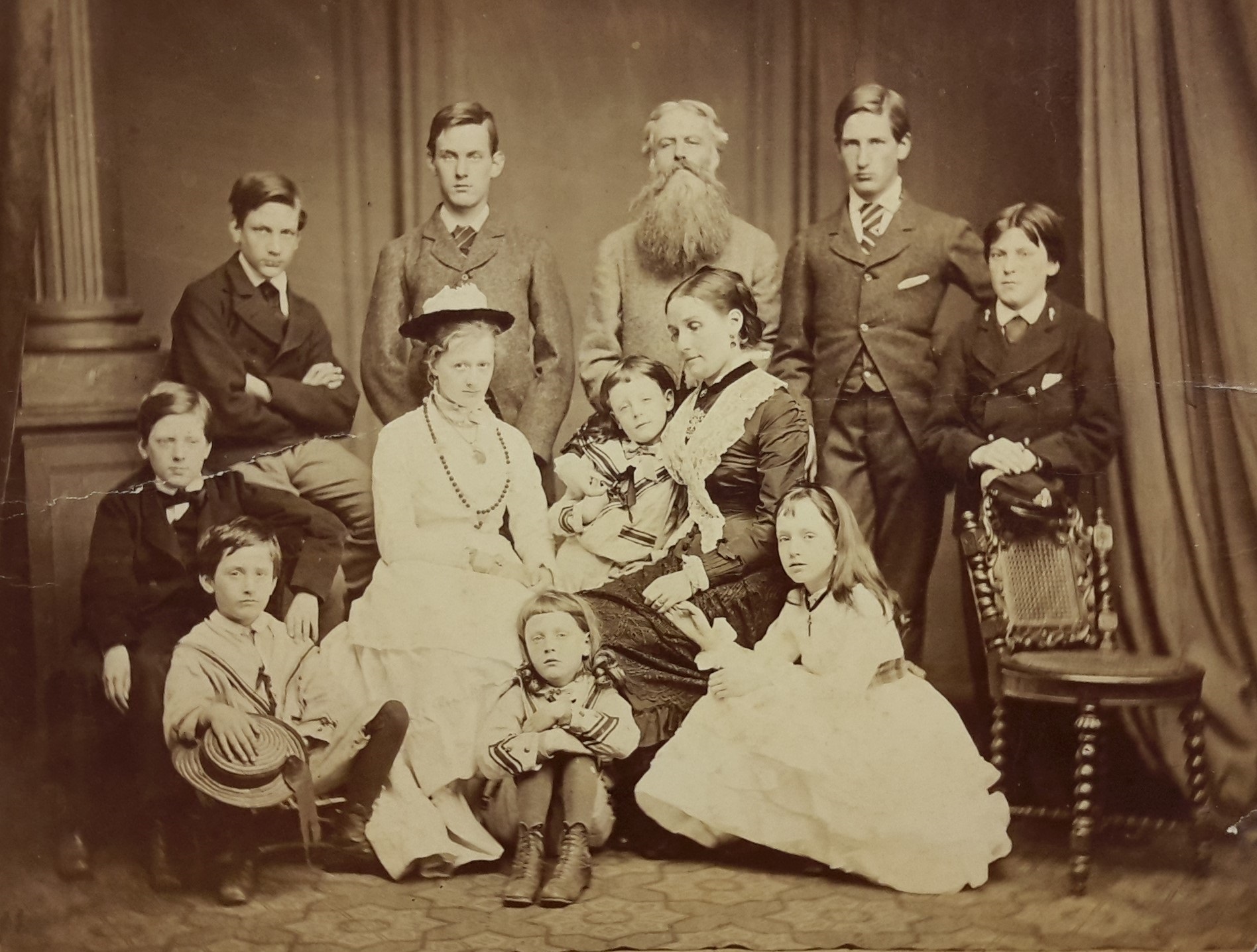 Photograph of the family of John Hungerford Pollen (with beard, standing centre), unknown photographer, Archive of John Hungerford Pollen and the Pollen Family, Oxford, Bodleian Libraries, MS. 17906 Photogr. 3.
Photograph of the family of John Hungerford Pollen (with beard, standing centre), unknown photographer, Archive of John Hungerford Pollen and the Pollen Family, Oxford, Bodleian Libraries, MS. 17906 Photogr. 3.













